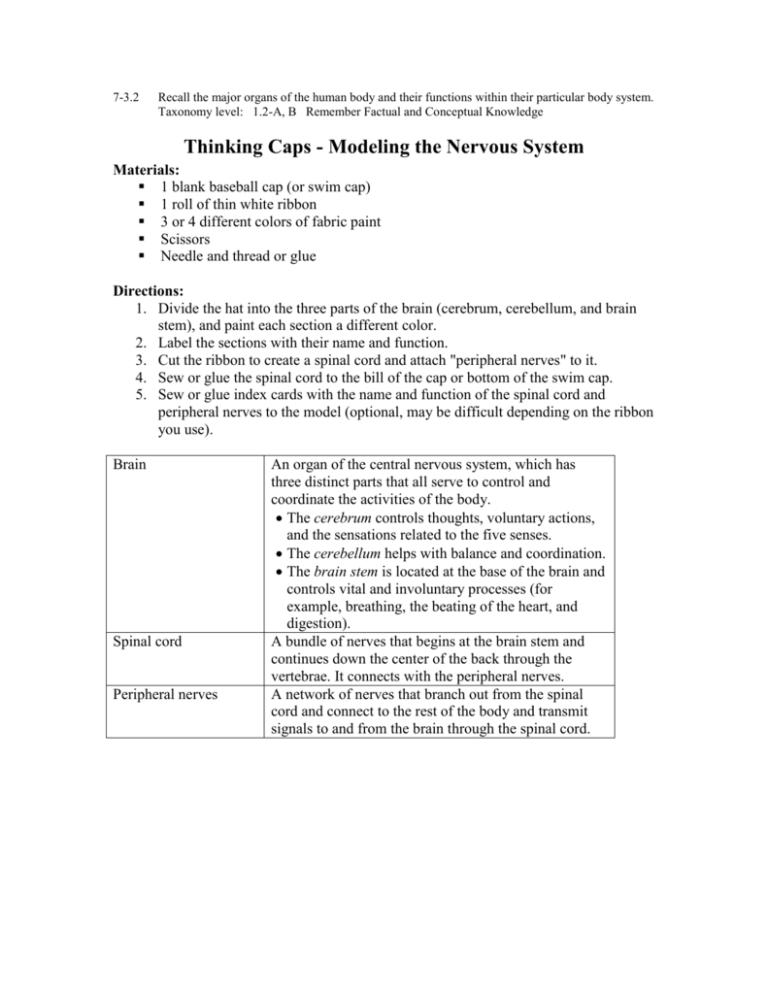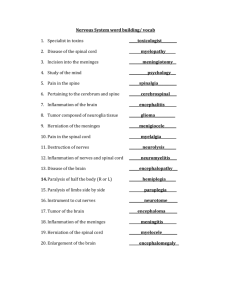Thinking Caps - Modeling the Nervous System
advertisement

7-3.2 Recall the major organs of the human body and their functions within their particular body system. Taxonomy level: 1.2-A, B Remember Factual and Conceptual Knowledge Thinking Caps - Modeling the Nervous System Materials: 1 blank baseball cap (or swim cap) 1 roll of thin white ribbon 3 or 4 different colors of fabric paint Scissors Needle and thread or glue Directions: 1. Divide the hat into the three parts of the brain (cerebrum, cerebellum, and brain stem), and paint each section a different color. 2. Label the sections with their name and function. 3. Cut the ribbon to create a spinal cord and attach "peripheral nerves" to it. 4. Sew or glue the spinal cord to the bill of the cap or bottom of the swim cap. 5. Sew or glue index cards with the name and function of the spinal cord and peripheral nerves to the model (optional, may be difficult depending on the ribbon you use). Brain Spinal cord Peripheral nerves An organ of the central nervous system, which has three distinct parts that all serve to control and coordinate the activities of the body. The cerebrum controls thoughts, voluntary actions, and the sensations related to the five senses. The cerebellum helps with balance and coordination. The brain stem is located at the base of the brain and controls vital and involuntary processes (for example, breathing, the beating of the heart, and digestion). A bundle of nerves that begins at the brain stem and continues down the center of the back through the vertebrae. It connects with the peripheral nerves. A network of nerves that branch out from the spinal cord and connect to the rest of the body and transmit signals to and from the brain through the spinal cord.











